The Future of the Region: Public Function in Central American Integration
Por Jonattan Murillo Ugalde
When talking about integration between Central American countries, few consider the importance of culture to achieve the final purpose; However, the only way to achieve Central American union is through integration from cultural diversity (Cuenín, 2009). After several attempts to integrate into the history of Central America, it is evident that this is not an easy task and if we return a few decades or more, to the time of independence, we will find that between the separatist movements and the wars, there were several attempts to political union, this despite all the turmoil.Several reasons led to failure, one of which was that at that time the economic and social importance of integrating into sister countries was not understood. This is how Central America was constituted of small nations, each one missing the other and trying to form its own political and economic life.
Unfortunately, each country was built in a cultural, social, political and economic way, having only the language and religious beliefs in common. Achieving integration became an almost impossible mission, since apparently each region had adopted its own vision of what it meant to be Central American - which remains in force until today - integrating the public function from a national point of view and not regional.
Despite individualistic feelings, globalization has shown Central Americans that unity is evidently strength and therefore no nation can develop its potential in isolation.The process of Central American integration is at a historical moment, because apparently the governments of the countries of the region seem to understand the need and the urgency to consolidate as a true union and share the pride of being Central American.It is necessary to overcome not only the territorial limits, but also those mental, in order to understand that in the diversity of ethnicities, inheritances, customs and beliefs, there is what can truly unite, focusing the national public function to achieve the integration of states through structures, cultural patterns, explicit or implicit policies, processes, practices and activities of various situations whose purpose is to ensure a healthy union process that allows the proper management of human-political resources, within the framework of a professional and effective public administration , at the service of regional interest.
The public function worldwide is focusing on the integration of countries into regions and can be evidenced by the various levels of unification that it faces in the world: free trade zones, customs unions, common markets and economic unions. An example is the European Union and its Supranational Institutions, linked to centralized economic policy, common social and fiscal policies and a multinational body with the authority to make decisions, linking all its members.
Sauvé P. exposes his theory on mega-regional agreements where an increasing number of WTO members have strategically reassessed their trade policy and negotiation priorities, leading small economies to the formation of regional integrations to negotiate and obtain Greater benefits. Such is the case of AACUE in Central America.
In that sense, the Latin American countries have rethinked and promoted their public function oriented to mechanisms of economic integration (Mercosur, Andean Community, Central American Integration System, Caricom) in order to face the new economic challenges derived from globalization, the interdependence and transnationalization.
At the Central American level in 1960, the Central American Common Market was created, as a result of the realities of the countries of the region and their particular policies.
With respect to this, the Central American Integration System (SICA), as the organ in charge of public service in the region, has achieved the following advances: Consolidation of intra-regional trade in final and intermediate goods and services; ability to act as a block in the most important international political, economic and social forums, as well as the ability to negotiate extra-regional Free Trade Agreements in a coordinated manner; in immigration matters, one of the oldest but relevant achievements of SICA is the free mobility of people, within the framework of CA-4; inter-country coordination in dealing with security issues and establishing a regional perspective that complements national policies; and institutionalization of the SICA Advisory Committee, which groups the business, labor, academic and civil society sectors, organized regionally, which has fulfilled its mandate to advise the General Secretariat, in turn becoming a sensitization forum reciprocal between sectors.
Among the challenges that are identified within the Central American public service is the development of local markets for goods and services; the fight against poverty and inequality; the protection of natural resources; adequate insertion in the extra-regional political and economic sphere; disaster prevention and management; the fight against organized crime and democratic security, among others.
But even though SICA has good intentions or expectations of integration in all areas, that countries can decide, each one, the pace at which they want to participate in the process and collectively decide where they want to take it, is the main problem that weakens the progress and benefits that integration would bring; being the focal point that must attack the public function in order to achieve a true Central American union promoting the internalization of a feeling of commitment to the region, which leads them to favor the general interests against the position of nationals.
References
Cuenín X, 2009. Integración Centroamericana en el Período 1821-1921.
Barahona N. et al. Conflictos Armados en Centroamérica en los últimos 20 años (1996-2016).
Del Arenal, C. La Nueva Sociedad Mundial y las Nuevas Realidades Internacionales: Un Reto para la Teoría y para la Política.
Gonzales, A. La Unión Europea, EL proceso de integración regional más avanzado a escala planetaria.
Gonzales, A. Mercado Común Centroamericano, Centroamérica y su Integración.
Rosales O. La globalización y los nuevos escenarios del comercio internacional.
Sanahuja J. Dinámicas de la sociedad internacional (II): La guerra y el conflicto armado.
Sauvé, P. Mega-regional trade agreements: Speculating on third country effects.
SICA. Proceso de la integración regional. Recuperado de: https://www.sica.int/sica/vistazo/proceso.aspx



